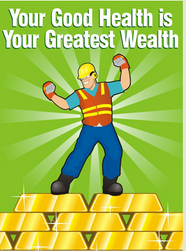
Autism, or Autism Spectrum Disorder (ASD), is a condition that affects how a person communicates, interacts with others, and behaves. People with autism often have difficulty understanding social situations, may have special interests, and may repeat certain actions. Autism affects people differently; some need a lot of help, while others can live quite independently.
Autism is called a “spectrum” because it includes a wide range of symptoms, from mild to severe. Every person with autism is unique.
Types of Autism
In the past, doctors used different names for types of autism. Today, they usually call it “Autism Spectrum Disorder.” However, it can still be helpful to understand the old categories to see the different ways autism can appear.
1. Classic Autism (Autistic Disorder)
This is what most people think of when they hear “autism.” People with classic autism often:
· Have trouble speaking or understanding language.
· Prefer to be alone and may not look people in the eyes.
· Do the same activities or movements over and over, like rocking or hand-flapping.
Some people with classic autism may also have learning difficulties.
2. Asperger’s Syndrome
Asperger’s Syndrome is often called “high-functioning” autism. People with Asperger’s usually:
· Have normal or above-average intelligence.
· Speak well but may find it hard to have conversations or understand jokes.
· Have strong interests in specific topics, sometimes to the point where they talk about them all the time.
Many people with Asperger’s can live independently but may need help with social skills.
3. Pervasive Developmental Disorder – Not Otherwise Specified (PDD-NOS)
PDD-NOS is for people who have some autism traits but do not fit into the other categories. These people:
· May have milder symptoms than classic autism.
· Still have difficulty with social skills and communication.
· Need some support, but their symptoms are less severe.
4. Childhood Disintegrative Disorder (CDD)
This type of autism is rare. Children with CDD develop normally until about age 2–4, but then they suddenly lose the skills they had learned, like:
· Language and communication skills.
· Social abilities.
· Motor skills (like walking or using their hands).
CDD can be very hard for families because of the sudden change in their child’s development.
5. Rett Syndrome
Rett Syndrome mainly affects girls and is caused by a genetic mutation. Children with Rett Syndrome:
· Lose the ability to speak and use their hands.
· Develop repetitive hand movements, like wringing or clapping.
· May also have physical disabilities, such as difficulty walking.
Although Rett Syndrome was once considered part of the autism spectrum, it is now recognized as a separate disorder.
Autism Levels
In the newer system, doctors use levels to describe how much support a person with autism needs:
· Level 1 (Requiring Support): People can do many things by themselves but may need help with social interactions.
· Level 2 (Requiring Substantial Support): These individuals need more help in everyday life, especially with communication and handling changes.
· Level 3 (Requiring Very Substantial Support): People at this level need a lot of help, as they struggle with basic communication and often repeat behaviors.
Autism is a complex condition that affects each person in a unique way. Some people need little help, while others require full-time care. Understanding the different types and levels of autism can help us support people with autism better. Early diagnosis and the right support can make a big difference in their lives.


